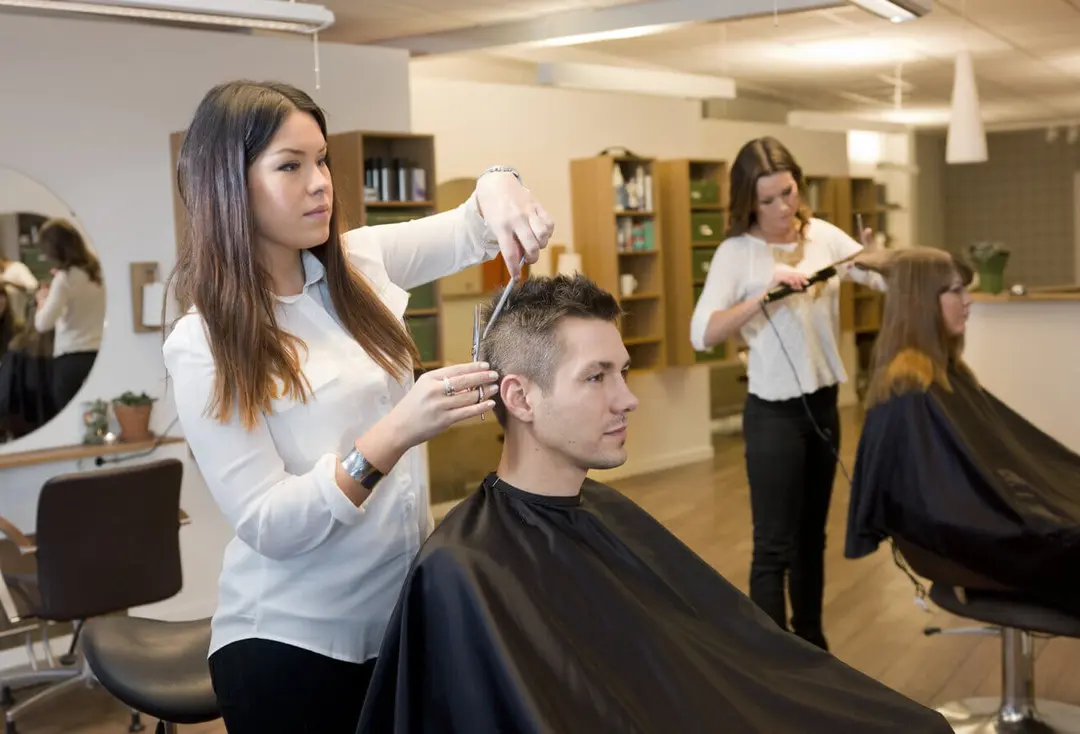Salons are lively establishments where barbers, stylists, and technicians work towards giving their best in offering world-class service. All that glamour and beauty conceal numerous ergonomics-based risks that lead to chronic musculoskeletal disorders (MSDs) when not managed well. Identifying these risks is significant to employees, managers, and owners who will soon offer a healthy, productive workplace.
This article identified “7 Most Common Ergonomic Hazards in Salons”, their modes of exposure, and practical solutions for prevention.
Ergonomic Hazards in Salons
1. Prolonged Standing
Salon professionals often spend 6–10 hours a day standing, leading to fatigue, lower back pain, and leg strain. Over time, this can result in varicose veins, joint degeneration, and chronic lower extremity pain.
Mode of Exposure:
-
Cutting, styling, and coloring hair
-
Performing manicures or pedicures
-
Standing at a reception desk or treatment station
Management:
-
Invest in anti-fatigue mats at all workstations.
-
Encourage the use of sit-stand stools for tasks that allow seated posture.
-
Schedule regular breaks to rest and stretch.
-
Rotate duties among staff to minimize static postures.
2. Awkward Postures
Reaching above shoulder height or bending over clients causes the spine and joints to deviate from their neutral position, increasing the risk of neck and shoulder strain or carpal tunnel syndrome.
Mode of Exposure:
-
Shampooing clients while bending over a sink
-
Holding blow dryers and tools above shoulder height
-
Twisting and leaning to access supplies
Management:
-
Adjust chair and basin heights to maintain a neutral posture.
-
Use ergonomic salon chairs and stools with adjustable features.
-
Store supplies within easy reach to reduce overextension.
3. Repetitive Motions
Tasks such as brushing, blow-drying, and using scissors involve repetitive hand and wrist movements. This can lead to repetitive strain injuries (RSIs), including tendinitis and trigger finger.
Mode of Exposure:
-
Frequent brushing or combing
-
Continuous snipping with scissors
-
Repeated application of polish or color
Management:
-
Alternate between tasks that use different muscle groups.
-
Use ergonomically designed tools (lightweight, anti-slip grip).
-
Incorporate hand and wrist stretches throughout the workday.
Read Also: Human Factors and Ergonomics on Emerging Technology
4. Forceful Exertions
Exerting too much force, especially with the fingers, wrists, or arms, can cause overuse injuries. This is common when using non-ergonomic tools or applying excessive pressure during massages or treatments.
Mode of Exposure:
-
Cutting thick hair with dull scissors
-
Applying pressure during scalp massages or scrubs
-
Removing gel or acrylic nails
Management:
-
Keep tools well-maintained and sharp.
-
Train staff in force-reduction techniques.
-
Use powered or electric tools where possible.
5. Poor Tool and Equipment Design
Non-ergonomic tools and fixed-height workstations force the body into awkward and unnatural positions, causing stress on the musculoskeletal system.
Mode of Exposure:
-
Using heavy blow-dryers or clippers
-
Fixed-height workstations or sinks
-
Chairs without lumbar support
Management:
-
Use lightweight, ergonomically designed tools.
-
Install adjustable chairs, stools, and work surfaces.
-
Choose salon furniture with adequate lumbar support.
6. Inadequate Workspace Layout
Cluttered or poorly organized work areas lead to unnecessary reaching, bending, and walking, which increases physical strain and reduces efficiency.
Mode of Exposure:
-
Reaching over clients or around equipment
-
Navigating tight spaces with hot tools
-
Constantly moving to fetch supplies
Management:
-
Design open, accessible layouts with organized tool stations.
-
Store frequently used items at waist height.
-
Label and compartmentalize tools for quick access.
Read Also: Office Ergonomics Best Practices
7. Insufficient Breaks and Recovery Time
Without adequate rest, the cumulative physical and mental stress on the body leads to fatigue, reduced productivity, and a higher risk of injury or burnout.
Mode of Exposure:
-
Back-to-back appointments with no scheduled breaks
-
Ignoring early signs of strain or pain
-
Lack of policies supporting ergonomic health
Management:
-
Implement mandatory micro-breaks (2–5 minutes every hour).
-
Provide a designated rest area with supportive seating.
-
Encourage staff to report early symptoms of discomfort.
Final Thoughts from an Ergonomic Safety Expert
Maintaining ergonomic safety in a salon is not just about comfort—it’s about long-term health, productivity, and job satisfaction. Salon owners and employees must work together to identify hazards early and take proactive steps to redesign workspaces, rotate tasks, and provide the right tools and training.
Regular ergonomic assessments, staff education, and investing in quality equipment go a long way in preventing injuries and reducing downtime.
A seasoned Health and Safety Consultant with over a decade of hands-on experience in Occupational Health and Safety, UBONG EDET brings unmatched expertise in health and safety management, hazard prevention, emergency response planning, and workplace risk control. With a strong passion for training and coaching, he has empowered professionals and organizations to build safer, more compliant work environments.
Certified in globally recognized programs including NEBOSH, ISO standards, and OSHA regulations, he combines technical know-how with practical strategies to drive health and safety excellence across industries. designing comprehensive HSE management systems or delivering impactful safety training, whether he] is committed to promoting a culture of safety and continuous improvement.
